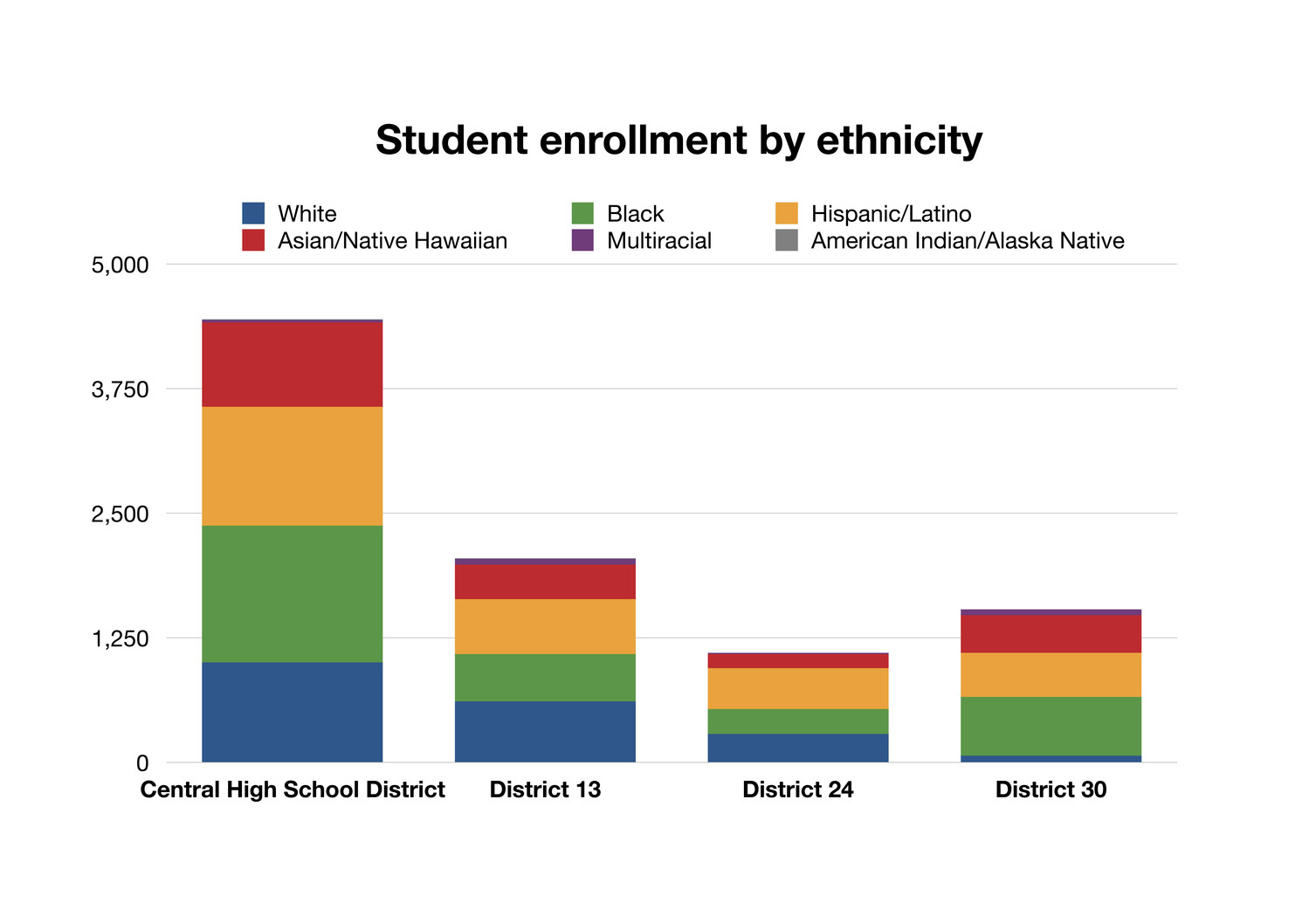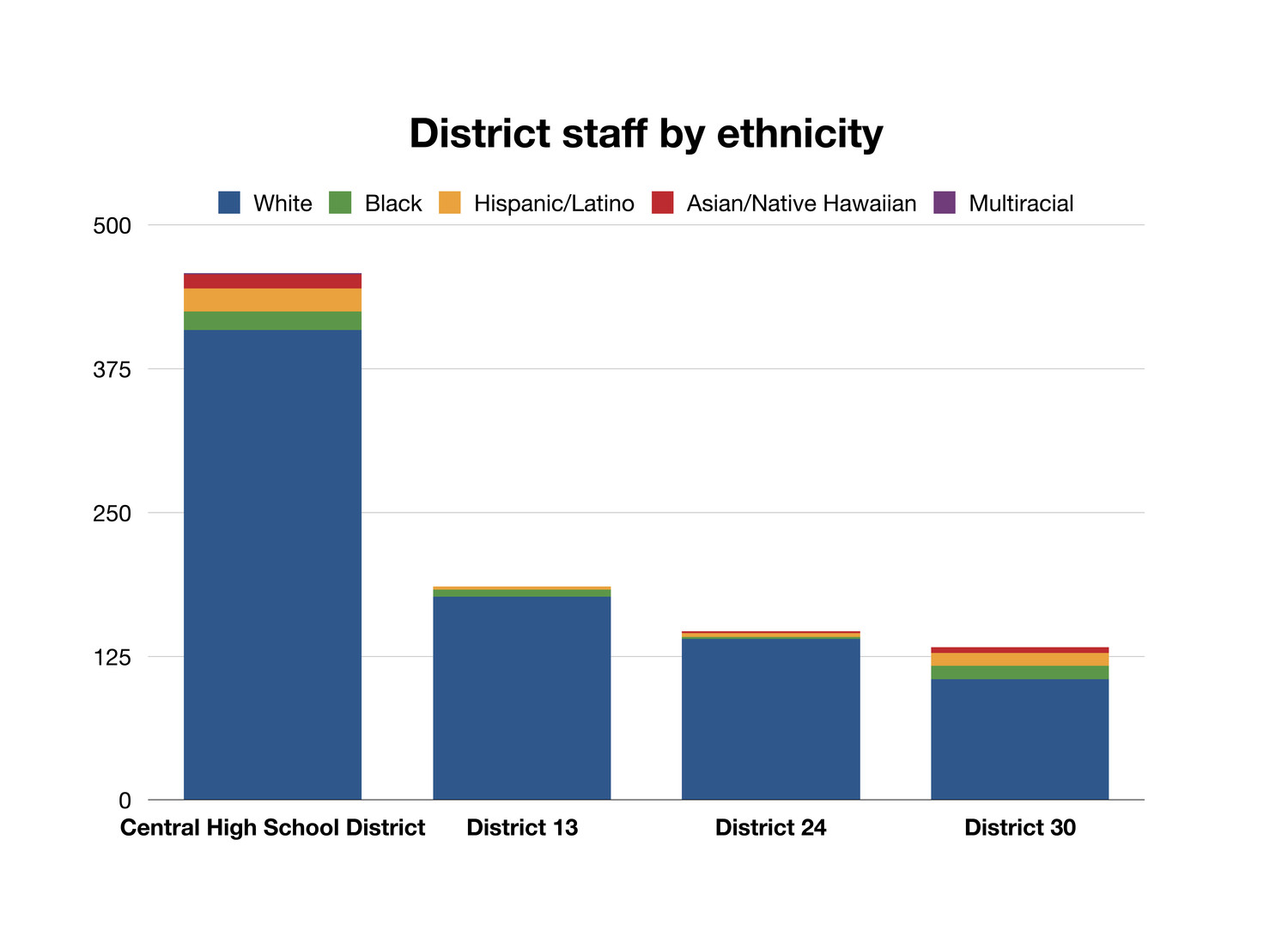Valley Stream schools struggle to achieve diversity among staff

School officials are working to recruit a more diverse pool of candidates for teaching and administrative positions in Valley Stream — a community highly regarded for its wide-ranging ethnic student body, which remains almost entirely educated by white people.
“It’s not as simple as just go out and recruit,” said District 30 Superintendent Nicholas Stirling. “You also have to be brave enough to look at your institution, and your organization as a whole, and to really analyze whether or not: Are there any institutionalized or organizational structures that are in place that hinder the opportunity for people of color to move through a process?”
Valley Stream once had a reputation for being a secluded, mostly white alternative to New York City, but it is now known for its diverse population. Across the U.S., however, the education workforce is largely homogeneous — 82 percent of teachers identify as white, according to the U.S. Department of Education — and Valley Stream is no exception.
Eighty-nine percent of the Central High School District staff identifies as white, as do 95 percent of District 13’s, 95 percent of District 24’s and 79 percent of District 30’s. Identification of professional staff is monitored by each district, and collected on a voluntary basis.
Diversifying education staff is widely believed to provide students with a more authentic experience of society as a whole, but studies have also linked it to academic performance.
Low-income black students who have at least one black teacher in elementary school are significantly more likely to graduate from high school and consider attending college, an April study published by the Institute of Labor Economics concluded. Having at least one black teacher in third through fifth grades reduced a black student’s probability of dropping out of school by 29 percent, according to the study. For low-income black boys, specifically, the chance of dropping out fell by 39 percent.
Districts 13 and 30 have both made increasing diversity an explicit Board of Education goal, and have seen success. Stirling, who was an affirmative action officer for the White Plains school district before he came to Valley Stream, said that district officials seek out diversity job fairs as part of recruitment efforts.
“If you have a larger pool of candidates that are within the minority group, then you have a larger chance of actually hiring,” he said, “but there’s no guarantee to that.”
Constance Evelyn, superintendent of District 13, said that diversifying school staff is the board’s top priority, and that it plans to host a diversity recruitment fair this year. Since Evelyn assumed the role in 2015, five black teachers and three Hispanic teachers were hired. She and Stirling are both members of the New York State Council of School Superintendents’ Committee on Diversity and Inclusivity.
L’Heureux Lewis-McCoy, an associate professor of sociology at City College of New York, said that one of the dangers of having an overwhelmingly white teaching force and a student body predominantly of students of color is that the needs of students and families may go unmet.
For example, he said there exists a portion of misdiagnosed special education students, because teachers misread cultural cues and label them behavioral problems. Lewis-McCoy cited a famous example used by Dr. Russell Skiba, an education professor at Indiana University, in which a black student became frustrated with his white teacher and said that he was going to “bounce.” The white teacher misinterpreted the exchange, thinking the boy was going to attack her when he was merely saying that he wanted to leave.
“What it means for a child of color to see a teacher, who comes from their background or a similar background, in front of a classroom, displaying mastery — it sends a signal about what’s possible,” Lewis-McCoy said.
A changing community
The shift in the demographics of Valley Stream has been relatively abrupt, and nearly impossible for school hiring processes to account for, according to Central High School District Superintendent Bill Heidenreich. Since 2007, the high school district population of white students has dropped by nearly half. The student body is 22 percent white, according to the most recent State Education Department statistics from 2015-16.
Heidenreich said the Board of Education has paid subscription fees to Nassau BOCES to attend diversity job fairs, and has partnered with Queens College and the New York Institute of Technology to gain access to similar networking events.
“While we have much more to do,” he said, “our staff is more diverse than they were 14, 10 and even five years ago.”
Ed Fale, superintendent of District 24, said he has long been vexed by the lack of minority candidates expressing interest in employment. Despite the district’s recruitment efforts, he said, few people of color apply to work there.
Fale and Heidenreich both said they believed that a declining interest in a career in education could be a factor in the districts’ struggle to find diverse candidates.
Lewis-McCoy, however, said that more people of color are interested in education than one might think.
“One of the top 10 professions that black male college graduates go into is teaching,” he said, citing the research of Howard University professor Ivory Toldson. “ … We start to tell ourselves tales of what the numbers actually look like, without looking at the numbers.”
Valley Stream’s diverse student population has the potential to be attractive to young minority teachers entering the workforce, according to Lewis-McCoy.
“Valley Stream is in a unique position where it does actually have a diverse student body,” he said. “Where it actually has schools that are performing well … That’s attractive to folks who are often told, your only choice is to teach in the Bronx or to teach in Scarsdale.”
What can be done?
School officials in Valley Stream maintain their commitment to diversifying the teaching staff — as well as the administrative and clerical staff.
Stirling said that in District 30, careful attention is given to forming hiring committees that interview candidates, so that the racial and ethnic diversity of the student body is apparent to the potential hire right away.
“And it works the other way,” Stirling said. “If you are a Caucasian person, you need to know that there are diverse people in your community that you’re applying to.”
Lewis-McCoy said that recruiting a diverse candidate pool can be a “huge burden” for those who are not used to it, but there are opportunities for school districts beyond traditional diversity hiring fairs to aid the process.
He recommended that districts seek out partnership opportunities with historically black colleges and universities, and consider provisional credentialing — a method that allows teachers to begin work while pursuing their master’s degrees. Many black and Latino students who are accepted by prestigious schools that might look good on a resume, Lewis-McCoy said, cannot afford the higher debt load, and are less likely to attend or complete their certification.
He also recommended alternative certification programs that have a higher concentration of candidates of color, such as Teach for America or New York City Teaching Fellows.
Lewis-McCoy advised that school officials adopt a philosophy of “bottom-up” listening, in which they circumvent the typical channels — board meetings, PTA functions — and investigate what the broader community wants.
“Even though you live in the same space, if you are white in Valley Stream it’s different than being black in Valley Stream,” he said. “And as obvious as that may seem, one of the things about suburbia is like, when you escape the city, folks are like, ‘Well this is the good life.’ Well, the good life always has shades of difference.”
Let us know what you think. Send letters to the editor to nciccone@liherald.com.









